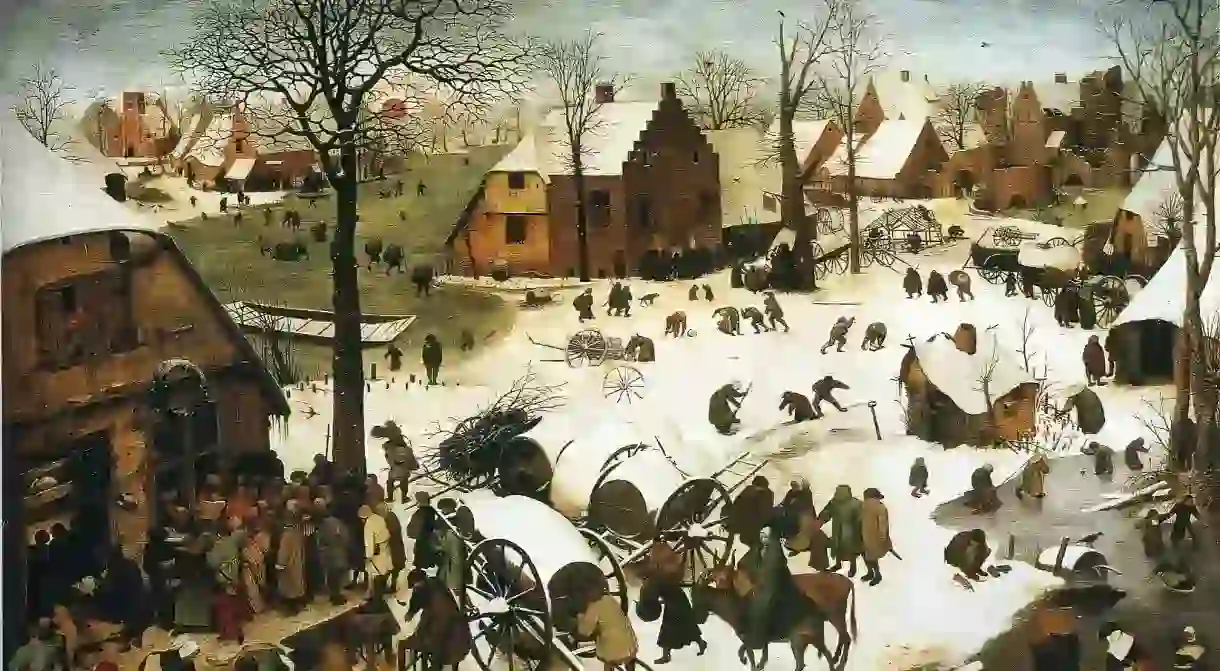11 Belgian Artists Who Aren't René Magritte

René Magritte is usually the first Belgian artist that comes to mind, and there’s very good reason for this – his artwork is of great significance and displays incredible skill. But there is so much more to Belgian art than Magritte. From the Flemish Primitives to contemporary creatives, we present 11 additional Belgian artists to know.
Jan Van Eyck (circa 1390-1441)
A frontrunner for the Flemish Primitives, Jan Van Eyck was one of the most famous painters in Europe during his lifetime. Employed by Duke of Burgundy Philip the Good, Van Eyck revolutionized the Gothic style by putting a greater emphasis on naturalism and realism in his artwork. He also developed new oil-based color mixing techniques, making him a true technical innovator, as well as an inspiration for later generations of painters. One of his most famous paintings is the Arnolfini Portrait and the Adoration of the Mystic Lamb, which still hangs in St. Bavo Cathedral in Ghent.

Rogier Van Der Weyden (1399-1464)
Rogier Van Der Weyden lived and worked during the same time period as Jan Van Eyck, and by the second half of the 15th century he had surpassed Van Eyck’s fame throughout Europe. While he did not stand the test of time as well as Van Eyck due to changing tastes in art, these days he is justly remembered as one of the greatest painters of the Flemish Primitives. His work included mostly portraits and religious triptychs with rich colorization and expressive pathos.

Pieter Bruegel the Elder (1525-1569), Pieter Brueghel the Younger (1564-1638) and Jan Brueghel the Elder (1568-1625)
Grouped together, Pieter Bruegel the Elder and his two sons, Pieter Bruegel the Younger and Jan Bruegel the Elder prove that the Bruegel family had some seriously artistic genes. Pieter Bruegel the Elder in particular was famous for his depictions of peasant life, which made him a real pioneer in genre painting. His works of art also provide us with immensely valuable observations on folkloristic customs from centuries ago. His son, Pieter the Younger specialized in landscape paintings in the style of his father, and Jan the Elder developed a considerable reputation for his flower paintings and allegories.

Peter Paul Rubens (1577-1640)
Sir Peter Paul Rubens was a classically educated Humanist scholar and a master in the extravagant Baroque style, which emphasized movement, color and sensuality. He is most famous for his Counter-Reformation altarpieces, portraits, landscapes as well as depictions of mythological and allegorical subjects, even collaborating with Jan Brueghel the Elder on The Garden of Eden with the Fall of Man.

Anthony Van Dyck (1599-1641)
Suspected to be of Peter Paul Rubens’ students, Van Dyck became very famous in England, where he painted numerous portraits of King Charles I and his family. His style was Baroque like that of his teacher, and one of his characteristics is a warm, brown hue to his paintings which came to be known as the “Van Dyck brown.” His influence on English portrait painting was immense, lasting for almost 150 years.

Constantin Meunier (1831-1905)
Constantin Meunier was a sculptor and painter of the 19th century, and was one of the first artists to truly focus on the image of the industrial worker as an icon of modernity. His work features working-class dockworkers and miners, and his statues in particular have left their mark in the art world.
Félicien Rops (1833-1898)
A controversial figure, Félicien Rops produced mostly satirical lithographs and etchings, which mostly featured the themes of sex, death and Satan. He associated with the French poet Charles Baudelaire on numerous occasions, and as a result was closely linked with the literary movements of Symbolism and Decadence. He was also a great influence for younger Symbolist artists such as Edvard Munch and Max Klinger.

James Ensor (1860-1949)
A dominant figure in the Belgian Modernist art scene, Ensor experienced several disappointments and rejections in his early career. This led him to prominently feature masks, puppets, skeletons and grotesque figures in his later work, features which have become some of the defining characteristics of his artwork. His most famous painting is the stunning and complex Christ’s Entry into Brussels in 1889, which is widely considered to be one of the forerunners of 20th century Expressionism.
![[ E ] James Ensor – Christ’s Entry Into Brussels (1888)](https://cdn-v2.theculturetrip.com/10x/wp-content/uploads/2016/01/5384018135_5fc8721b81_z.webp?quality=1)
Paul Delvaux (1897-1994)
Typically associated with Surrealism, Paul Delvaux nevertheless disliked being put in a specific category, as he felt it placed limits on his art. During his whole career, he constantly returned to images of trains, nude women and skeletons, the juxtaposition of which often created strange and unexpected works of art.

Marcel Broodthaers (1924-1976)
Marcel Broodthaers was a conceptual artist, poet, and filmmaker, who used literature as a central element in his art. He worked principally by creating collages with stray items, often incorporating written text into his art works. His artist’s book, Un Coup de Dés Jamais N’Abolira Le Hasard, based on Stéphane Mallarmé’s poem by the same title, is a collection of abstract illustrations and typography that has been considered an example of European post-avant-garde art.

Panamarenko (1940-Present)
Born as Henri Van Herwegen, Panamarenko is arguably as much of an engineer as he is an artist. The majority of his artworks are sculptures and models of airplanes and various other flying devices, as well as a submarine, a car and models of birds. Whether his creations can actually fly or not is part of the mystery, and many of the models have apparently been based on the myth of Icarus.














